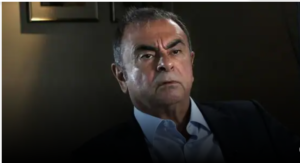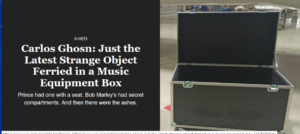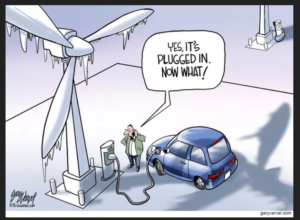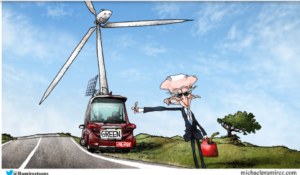NISSAN’S Carlos Ghosn’s
Brazen Escape From Japan
REPRINTED CREDITED AT END OF THIS POST….
WHAT A DARING JAMES BOND TYPE CAPER BY MR GHOSN-NOW HIDING IN BEIRUT!!!!

The scheme involved stacks of cash, a stealthy dash to the airport, and plenty of cloak-and-dagger tactics. In the end, though, the auto executive had to hunkerdown in a claustrophobic box, hoping no one would look inside.

Ever the thorough operative, Michael Taylor began laying the groundwork of his cover story as soon as the private jet he had chartered landed in Japan. He and George Zayek were violinists who would be performing nearby, he told a worker at the Osaka private-jet terminal shortly after the Bombardier Global Express arrived from Dubai at 10:10 a.m. local time.
As personnel at Kansai International Airport unloaded suitcases, a guitar case and two large black boxes, Tomoyuki Matsui, the manager of the private-jet terminal’s ground-service team, ushered the men to the terminal bus, which took them to the posh Premium Gate Tamayura. Kayoko Tokunaga, a 30-year-old employee fluent in English, was waiting to greet them and comfortably struck up conversation with Messrs. Taylor and Zayek as they waited for their passports to be stamped. “Your stay is so short,” she remarked, according to transcripts of police interviews.
They had an important meeting outside Japan the following day, Mr. Taylor explained. But he planned to come back for the Olympics in Tokyo the following summer. From the little that Mr. Zayek contributed, he struck Ms. Tokunaga as blunt and disagreeable.
As their luggage was wheeled into the terminal, Ms. Tokunaga and her boss, Mr. Matsui, started discussing the odd couple they were dealing with. As Mr. Matsui spoke, Ms. Tokunaga eyed the massive cases that she figured must contain amplifiers, even though they looked too large for the purpose.
She also saw a guitar case. Why were violinists carrying a guitar? Mr. Matsui and Ms. Tokunaga had been told the passengers were attending a concert by celebrated violinist Taro Hakase as guests, rather than as performers.
In reality, they were neither. Mr. Taylor had been hired to help Carlos Ghosn, the former chief of Nissan Motor Co. NSANY 0.70% and Renault SA, RN0-1.03% flee Japan, where he was facing serious criminal charges, having been accused of orchestrating a complex flow of money between Nissan, the Middle East, and his own pocket.
Mr. Ghosn, who has denied wrongdoing, had been the world’s most prominent car executive of the 21st century. To the astonishment of naysayers worldwide, he had forged two middling car makers into a global powerhouse, the Renault-Nissan Alliance. Near the end of his career, he had been ready to push through his last great act as an executive—a merger between the French and Japanese car makers.
By Mr. Ghosn’s account, a plotting group of Nissan executives had prevented that by conspiring to orchestrate his downfall. His careful plans had been thwarted by a dramatic, unexpected arrest in November 2018. Nissan has said: “The sole cause of this chain of events is the misconduct led by Ghosn.”
In mid-2019, Mr. Taylor received a call from one of Mr. Ghosn’s acquaintances asking whether he could mastermind an escape. Mr. Taylor roped in his old friend Mr. Zayek and also enlisted his son, Peter Taylor, to play a limited, supporting role in the scheme. The plan was to flee to Lebanon, where Mr. Ghosn had grown up and—most important—a country that did not extradite its citizens.
The men who had come to sneak Mr. Ghosn out of the country made about the least likely pair of violinists imaginable.
Now Mr. Ghosn, 65 years old, was out on bail while awaiting trial, which he feared would be unfair, he has said repeatedly. Furthermore, he believed the Japanese court process moved so slowly that he might die before a verdict was delivered. He was willing to risk everything for a chance at freedom.
This account is based on police interviews, security footage, bank statements and other documents, as well as interviews with people familiar with how the escape was conducted, including Mr. Ghosn himself.
On Dec. 29, 2019, Messrs. Taylor and Zayek landed in Japan to pull off the plan.
* * *
The men who had come to sneak Mr. Ghosn out of the country made about the least likely pair of violinists imaginable. Mr. Taylor looked like the former Green Beret that he was. Fitter than men half his age, with closely clipped salt-and-pepper hair and a square jaw, he was straight out of central casting.
Mr. Zayek painted an even more striking image. He openly bore the scars of his former life as a Lebanese militiaman. He was partially deaf in his left ear and partially blind in one eye and walked with a pronounced limp, the result of a leg injury decades ago.
From the airport, Messrs. Taylor and Zayek took two vans to the Star Gate Hotel, where they checked in at 11:12 a.m. Mr. Taylor was given room 4009, where hotel staff dropped off their suitcases and the guitar. Mr. Zayek checked into a room six floors above, to which hotel staff brought the two large black boxes.
Mr. Zayek returned to the lobby and waited for Mr. Taylor. While he sat there, an anxious employee from the terminal showed up with a suitcase they had forgotten on the plane—a slip-up that hadn’t been part of the plan. The worker bowed and apologized for the mistake. The employee noticed that Mr. Zayek turned his head as the employee was speaking. Mr. Zayek the “concert violinist” explained that he had difficulty hearing out of his right ear, then told him not to worry about the delayed suitcase.
Messrs. Taylor and Zayek hadn’t determined whether they would get Mr. Ghosn out that day or if the whole exercise would turn into a dress rehearsal. As seasoned operatives, they tried to make sure that there would be no surprises or unpredictable scenarios on such a high-stakes, high-risk mission. Just in case, Mr. Zayek took the opportunity of chatting with the employee to seed their cover story more fully, asking whether airport staff had screened their luggage. “The boxes contain amplifiers,” he explained, adding that the cargo was fragile and would be compromised if put through an X-ray machine.
Mr. Taylor came down a few minutes later, and just before noon, they flagged a taxi and headed for Shin Osaka Station, a hub of the shinkansen bullet train. Mr. Zayek had traveled to Japan twice before the escape and had learned his way around the Japanese train system. He walked to the counter and purchased two tickets for Tokyo.
As Messrs. Taylor and Zayek were checking into their hotel room in Osaka, Mr. Ghosn was having a leisurely morning with his youngest daughter, who was 27. He packed some bags. Ms. Ghosn’s return flight to the U.S. provided a convenient cover to send out some of her father’s personal belongings ahead of his escape.
They went to lunch, probably for the last time in Tokyo. If anything went wrong, it would be the last meal Mr. Ghosn would eat outside a jail cell for a long time—maybe forever. The pair chose a restaurant called We Are the Farm, a trendy farm-to-table eatery in a former dry cleaner located in the chic Azabu Juban neighborhood. The Ghosns loved this side of Japan. The food was excellent and the atmosphere lively. After lunch, they stopped by the house again to drop off Mr. Ghosn and pick up his daughter’s luggage. Mr. Ghosn pushed five suitcases to the garage, where his driver was waiting. Ms. Ghosn looked at the unusually large amount of baggage. She told the driver that she had too much and would need to drop some off for a friend to carry back to the U.S. Mr. Ghosn has said his own family played no role in the escape; his daughter hasn’t been charged with a crime.
Before they drove off, Mr. Ghosn told the driver to take the rest of the day off. He would call him again in two days, he said. At 2:05 p.m., the car carrying Ms. Ghosn pulled up in front of the Grand Hyatt. She shook hands with the younger Mr. Taylor, who had checked in to the hotel the previous day, and he took two of her suitcases up to his room. She got back into the car and headed for nearby Haneda Airport.
At 2:30 p.m. precisely, Mr. Ghosn pushed open the front door of his two-story home and stepped outside. The moment before he crossed the threshold, he was Carlos Ghosn, revered auto executive fighting to clear his name. As soon as he stepped across it to execute his plan, at best he would become Carlos Ghosn the international fugitive. If he was caught, it would be back to jail, perhaps for the rest of his life.
Dressed in a dark jacket and scarf with a woolen cap and sunglasses, he walked west on the main road. He paused and looked over his shoulder before continuing. He had recently complained to a court that Nissan’s security contractors spied on his every move.
Nissan wasn’t the only monitor. Cameras had been installed outside and inside the foyer of the home by the court, checked once a week by the prosecutors. In addition, a constellation of security cameras on homes and buildings captured every step of Mr. Ghosn’s 25-minute stroll from his spacious rented house to the Grand Hyatt.
It was a brisk, sunny winter Sunday ahead of the New Year’s holiday, one of the few times Japan shuts down. It was the perfect time to escape. Within a half-hour, Mr. Ghosn had reached the Grand Hyatt in Tokyo. Keeping his head down, he made his way through the lobby to the guest-room elevators. He got out on the ninth floor, walked down the hall, and entered room 933, where the younger Mr. Taylor was waiting.
The Nozomi express pulled into Shinagawa Station in Tokyo at 3:22 p.m., and Messrs. Taylor and Zayek, both wearing baseball caps, got off and headed for the north ticket gate. They exited the station on the western side and boarded a taxi for the Grand Hyatt.
For more than 30 minutes Mr. Ghosn had been in Peter Taylor’s room, where he’d changed clothes and was making small talk.
By the time Michael Taylor and Mr. Zayek reached the lobby of the Grand Hyatt, Peter was there waiting, having come down shortly before their arrival. When the two older men appeared, Peter immediately made for the elevator. The trio wanted to appear to be strangers in case the surveillance camera footage was reviewed. More than anything, Mr. Taylor wanted to ensure that his son wasn’t seen as an accomplice.
Michael and Peter Taylor, along with Mr. Zayek, entered the ninth-floor room. It was the first time Mr. Ghosn had met his would-be rescuers face-to-face.
“It’s time to go home,” Michael Taylor told Mr. Ghosn, greeting him with a large smile.
Seven minutes later, the four men left the room with Mr. Ghosn’s luggage. Peter Taylor headed to the hotel parking lot and took a taxi to the airport, where he was booked on a flight to China. Michael Taylor wanted his son to get out of the country before anything potentially illegal happened. Messrs. Ghosn and Zayek
and Michael Taylor left through the main entrance of the hotel and hailed a cab to Shinagawa Station. Mr. Ghosn now wore a pair of black, thick-rimmed glasses and a surgical mask, a common sight in Tokyo during flu season, as a convenient means of preventing people from recognizing the face of Japan’s most notorious criminal suspect. The station was packed with holiday travelers. The three men headed for the train platform.
Mr. Ghosn entered carriage 1 with Mr. Zayek. Michael Taylor entered carriage 2. The train left the station for Osaka at 4:55 p.m. The men tried to regularly keep on the move during the journey. Mr. Ghosn’s face had been a fixture on TV and plastered on magazine covers for two decades. Seeing him there would be like spotting Steve Jobs on a New York City subway. Mr. Taylor had given him advice about how to behave, urging him not to speak in case people recognized his voice. Don’t catch anybody’s eye, he counseled. Keep walking, but look straight down to the ground.
The bullet train arrived at Shin Osaka Station at 7:20 p.m. The men filed out and headed to the south ticket gate. They walked with military precision in single file, a few paces apart: Michael Taylor, then Mr. Ghosn, then Mr. Zayek.
They piled into another taxi bound for the Star Gate Hotel, with Mr. Ghosn and Mr. Taylor in the back seat and Mr. Zayek up front, next to the driver. Once in the taxi, Mr. Ghosn, who had remained bundled up for nearly three hours on the train, removed his mask to take a few deep breaths of fresh air. He also took off the hat but put them both back on a few minutes later.
At 8:15 p.m., the trio walked through the entrance of the Star Gate Hotel. Messrs. Ghosn and Zayek went directly to the 46th floor, where the boxes were kept, while Michael Taylor went to the front desk before going to his room on the 40th floor, grabbing a piece of luggage and the guitar case before heading up to meet the other two.
Mr. Ghosn took his time, inspecting the box carefully. He turned to Michael Taylor and Mr. Zayek, resolute. He wanted to get out of Japan that night. There would be no dry run.
While Messrs. Ghosn and Zayek rested and made preparations in the hotel room, Michael Taylor returned to the private-jet terminal to ensure that the plane would leave as planned and to double-check that the personnel there had received the message that their bags shouldn’t be scanned. Most charter airlines don’t require bags to be checked, so passengers can choose their level of security. Obviously, if the airport were to insist on opening the case containing Mr. Ghosn, the trio might never leave Japan. Mr. Taylor walked into the terminal at 9 p.m., catching the staff by surprise.
Ms. Tokunaga, the English-speaking employee, asked what he was doing there. Passengers who fly on private jets don’t often show up 90 minutes before departure.
“Are we going through a security check when we leave?” Mr. Taylor asked.
Ms. Tokunaga told him that there would be no security check. She then called Mr. Matsui, her manager, who was with the pilot. The pilot and Mr. Taylor talked briefly on the phone. Mr. Taylor hung up and said he would head back to the hotel, but not before handing Ms. Tokunaga an envelope.
“Here’s a tip for you,” he said. Inside, Ms. Tokunaga saw a stack of 10,000-yen notes, each worth roughly S100, held together by an elastic hair band. She had never seen that much money at once. She figured there must have been at least $10,000 in there.
Ms. Tokunaga told him she couldn’t take it. Tips were forbidden. Mr. Taylor declined to take back the envelope and told her to share it with her co-workers. He reminded her that he was returning for the Olympics. Ms. Tokunaga didn’t want to offend Mr. Taylor, so she held on to the envelope. Shortly after Mr. Taylor left, Mr. Matsui, the terminal manager, dialed Ms. Tokunaga. He had been surprised by Mr.Taylor’s sudden appearance and wanted to know what was going on.
“I think he just wanted to check the status of the aircraft,” Ms. Tokunaga said. Mr. Matsui asked to talk to Mr. Taylor, but he had already left for the hotel. Mr. Matsui made his way to the terminal and again asked why Mr. Taylor had come so far ahead of the departure time. Ms. Tokunaga told Mr. Matsui about the envelope of cash. It presented Mr. Matsui with a conundrum. He had handled ground services at the terminal for the past three years. He was used to foreigners who flew in and started handing out cash, not understanding that that was not done in Japan. But no one had ever handed him an envelope stuffed with such a huge amount.
Mr. Matsui dialed a manager at another agency to discuss whether they could accept the money. They decided it should be returned politely and in a way that wouldn’t offend Mr. Taylor, which could jeopardize future business. Mr. Matsui decided to wait until the last moment to return it to minimize any conversation.
When Mr. Taylor got back to the hotel, he asked for a luggage trolley to be sent to his room. A few minutes later, porters removed two suitcases from the room and took them to the lobby.
Mr. Taylor headed to the 46th floor and entered the room around 9:30 p.m. The private jet was due to leave the Osaka terminal, bound for Istanbul, in one hour.
Mr. Ghosn stood contemplating the box that was supposed to smuggle him aboard the jet. It was the last hurdle—and by far the biggest. Up until now, he had not technically done anything wrong. He was allowed to travel around the country. But he couldn’t explain this away. Nonetheless, it was the box he had chosen. It was that or a jail cell.

Taking a final deep breath, Mr. Ghosn lay down on the base of the box, and Mr. Taylor pulled a sheet off the bed and laid it over him. Mr. Taylor then put his guitar on top of Mr. Ghosn and tried closing the box. It fit, but the guitar pressed down on Mr. Ghosn. He would have to spend at least an hour in there, and he needed to be comfortable. The sheet stayed. It would be the only camouflage if airport staff decided they needed to look inside. The guitar case would be placed on top of the box.
Mr. Taylor could sense that Mr. Ghosn was nervous.
“Have you ever gone scuba diving?” he asked Mr. Ghosn.
“Yes,” said Mr. Ghosn.
Mr. Taylor told him to imagine that he was scuba diving and mimed taking slow, controlled breaths. He looked him in the eyes, communicating calm and confidence.
“Breathe slowly,” he reminded Mr. Ghosn.
Mr. Taylor lowered the top of the box, and everything went black.
This article is adapted from “Boundless: The Rise, Fall, and Escape of Carlos Ghosn” by Wall Street Journal reporters Nick Kostov and Sean McLain, published on Aug. 9,2022, by Harper Business, an imprint of HarperCollins Publishers (which, like The Wall Street Journal, is owned by News Corp).
.

 This would be an expensive ordeal.
This would be an expensive ordeal.